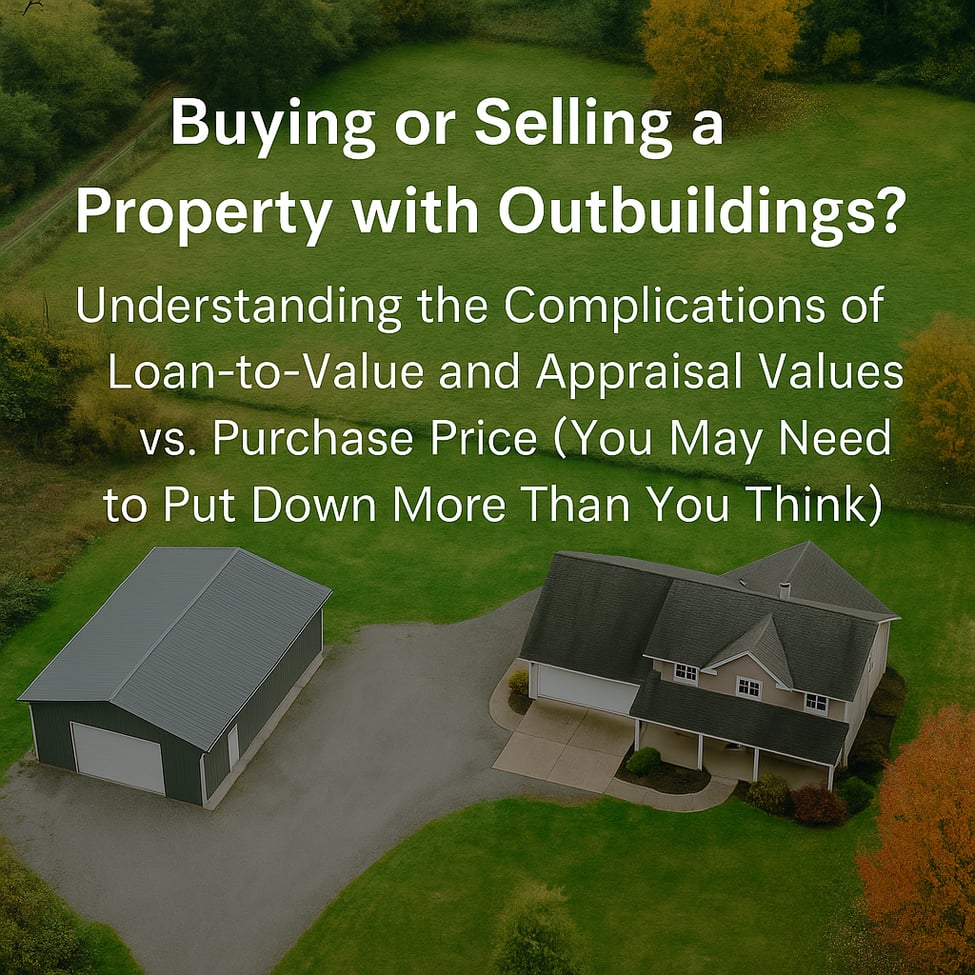When Unique Properties Meet Real-World Lending
Buying or selling an acreage or estate property in the Fraser Valley often means dealing with multiple outbuildings — shops, barns, carriage homes, or even full secondary dwellings. These features make the property special and are often what attract lifestyle or multi-generational buyers in the first place.
But when it comes to financing, banks and appraisers play by a different set of rules — and that’s where things can get tricky.
The Appraiser’s View: Land and Main Home Only
No matter how incredible the shop, suite, or studio is, an appraiser’s job is to determine market value based on comparable, financeable properties.
That means only the primary home and land usually count toward the appraised value. Outbuildings, even if they’re high-quality or income-generating, add little to no value in the lender’s eyes.
This difference becomes critical when your financing is tied to a specific Loan-to-Value (LTV) ratio.
The Loan-to-Value Reality: The Bank Lends on the Appraisal, Not the Offer
Here’s how it plays out in real terms:
You find your dream acreage with a beautiful main home and a massive detached shop. You agree to purchase it for $2,500,000 and plan to put 35% down.
At first glance, it looks like this:
| Scenario | Purchase Price | Appraised Value | Bank Lends (65%) | Buyer’s Down Payment |
|---|---|---|---|---|
| Ideal | $2,500,000 | $2,500,000 | $1,625,000 | $875,000 (35%) |
| Appraisal Shortfall | $2,500,000 | $2,150,000 | $1,397,500 | $1,102,500 (44%) |
That’s a difference of $227,500 — meaning your down payment just jumped from 35% to nearly 44% overnight.
Why? Because lenders calculate their loan based on 65% of the appraised value, not the purchase price.
If the appraisal comes in low, the buyer must make up the difference in cash to close.
For Buyers: Be Prepared for the Gap
If you’re shopping for a property with multiple outbuildings, it’s wise to:
Budget an additional 5–10% buffer on top of your planned down payment.
Work with a mortgage broker familiar with acreage and unique property lending.
Understand that the lender’s appraiser is the final word — not your purchase contract.
This preparation can mean the difference between a smooth closing and a deal that collapses at financing.
For Sellers: The Right Buyer Matters
When selling a property with shops, barns, or secondary dwellings, it’s easy to see the full package value — and you should.
But your buyer pool is smaller, and only certain buyers can handle the financing structure these properties demand.
That’s why it’s crucial to have a listing agent who:
Knows how to identify and pre-qualify the right buyer demographic.
Understands how lenders and appraisers view multi-structure properties.
Can craft a marketing plan that sells both the lifestyle and the lending reality.
The Bottom Line
If you’re buying, remember — your lender’s checkbook is based on the appraised value, not your offer.
If you’re selling, make sure your Realtor knows how to position your property to attract financially qualified buyers who understand that reality.
Considering buying or selling a property with multiple outbuildings or secondary dwellings?
Let’s build a game plan to help you structure your deal around both lifestyle and lending realities — so you don’t get blindsided by the appraisal.
📞 Book your Game Plan Meeting today to get clarity before you make a move.

